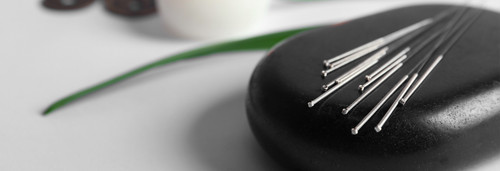ltimate Guide To Acupuncture Needles
Posted by AA Wellness Supply LLC on 16th Oct 2020
If you run a successful acupuncture practice, we know that having an endless supply of high-quality, sterile needles will always be #1 on your list of priorities!
Getting hold of needles that are suitable to treat a particular ailment or insert in specific points in the body is crucial to ensuring the wellness of your clients. And yet, sourcing the right acupuncture accessories can be quite a task. After all, such needles are not your regular needles. They are extremely thin, almost thread-like. That’s one of the reasons why acupuncture doesn’t hurt.
In this blog, we will talk about the nitty-gritties of acupuncture needles and Korean hand therapy supplies so that you can easily identify and source the needles you need for your clinic:
Type of handle
Many people face confusion while choosing between different types of acupuncture handles. It is believed that each has its own set of pros and cons. For instance, copper loop handles offer practicians the advantage of being able to gauge the client’s response to the inserted needles. It is also perfect for heat therapy, which is why it is experienced professionals opt for this handle. On the other hand, plastic ones are more easily available and are affordable too. Although they offer the benefit of rigidity and can be inserted easily by a beginner, it is important to take into account that these aren’t suitable for moxibustion treatment. Spring style handles offer excellent grip, while those with a loop design are perfect for those who follow the traditional Chinese school of acupuncture.
Take into account the type of therapy you are offering when you buy needles with handles. At the same time, it doesn’t hurt to have an adequate supply of different kinds of handles so you can choose your pick depending on the needs of your individual clients.
Thickness
Even the most experienced practitioners get confused when it comes to ordering needles and Korean hand therapy supplies depending on their thickness, or gauge! It is important to remember that there is a significant difference between Japanese and Chinese gauge standardizations.
While Chinese gauge numbers decrease in value as the thickness goes up, the Japanese standardization is its exact opposite. But this approach to choosing needles can get quite confusing. Thank got that there is a color-coding system in place!
Thin needles – ranging from 0.12 - 0.18 mm – are suitable for the areas that are shallow such as the ears, fingers, and toes. On the other hand, thicker needles of 0.30 - 0.50 mm are used on the legs. It is normal for experts to also use standardized needles of the same sizes for the entire body.
Length
Longer needles should not be used near the vital organs. Practicians usually go for longer ones to access the Hua-to Jia Ji points on the back or for areas that have more fat and muscle such as the gluteal area. For moxibustion therapy, extremely short needles are not recommended.
In addition to these points bear in mind the quality of the steel of your needles. If it’s too cheap, it may be prone to breaking or melting. For high-quality acupuncture needles, Korean acupuncture pens, and supplies, check out our catalog today.

